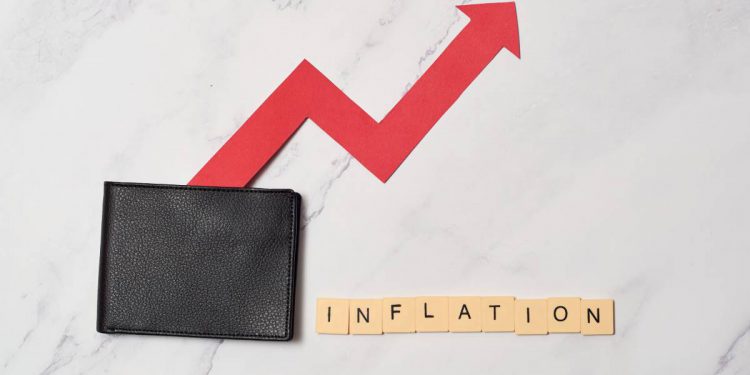Inflation is something most of us hear about in the news or feel when we’re shopping for groceries, filling up the car, or paying rent. But over the past few years, inflation has become more than a background economic term—it’s a daily concern for millions of people worldwide. Prices are rising fast, and many are asking the same question: Why is inflation so fast that we can barely keep up?
In this article, we’ll break down what’s causing this rapid inflation, how it affects everyday people, and whether there’s any relief in sight.
What Is Inflation?
At its core, inflation refers to the general increase in prices over time, meaning your money buys less than it used to. A small, steady rate of inflation is considered normal and even healthy in a growing economy. Central banks, like the Reserve Bank of Australia or the US Federal Reserve, typically aim for an inflation rate of around 2% per year.
But what happens when inflation jumps to 6%, 8%, or more? Suddenly, the cost of living rises much faster than wages, and that’s when inflation becomes a problem.
What’s Driving Inflation Right Now?
Several factors have contributed to the recent rapid rise in inflation, and many of them are interconnected. Let’s look at the main culprits:
1. Post-Pandemic Demand Surge
After years of COVID-19 lockdowns, people were eager to spend again—on travel, restaurants, cars, home improvements, and more. Governments had also injected trillions of dollars into their economies to stimulate recovery. While this was necessary to avoid economic collapse, it also meant more money chasing fewer goods, which drove prices up.
2. Supply Chain Disruptions
At the same time, supply chains were struggling. Factories closed or operated at limited capacity, shipping containers were in the wrong places, ports were backed up, and truck drivers were in short supply. This meant that goods weren’t being produced or delivered as quickly as needed, leading to shortages and price spikes.
Think about how hard it was to buy electronics, building materials, or even cars during the pandemic. That scarcity pushed prices higher.
3. Energy Prices and Global Conflict
Russia’s invasion of Ukraine in 2022 sent oil and gas prices soaring globally. Europe, in particular, faced a major energy crisis. Energy is central to nearly everything—transport, production, heating, farming—so when fuel prices increase, the cost of all goods and services also rise.
Even today, with some prices stabilising, global energy markets remain unpredictable and continue to contribute to inflation.
4. Wage Increases and Labour Shortages
In many countries, particularly in service sectors, workers demanded higher wages due to rising living costs. Some industries faced labour shortages as people changed careers or left the workforce. Businesses, in turn, raised prices to afford these new wages, creating a feedback loop: higher wages → higher prices → more inflation.
5. Housing and Rent Pressures
Whether you’re trying to buy a home or rent, you’ve likely noticed how much property costs have jumped. In cities across the globe, the cost of shelter has become a major factor in inflation. Low interest rates during the pandemic led to a housing boom, and now rising interest rates are pushing up mortgage repayments and squeezing renters too.
Why Does It Feel Like We’re Barely Keeping Up?
Even if official inflation numbers seem manageable, many people feel like they’re constantly falling behind. Here’s why:
1. Wages Aren’t Growing Fast Enough
While prices have surged, wages have lagged behind. Even if you get a raise, it may not cover the cost increases in rent, petrol, groceries, and utilities. This gap between income and expenses puts serious strain on households.
2. Everyday Essentials Are Hit Hardest
Inflation isn’t evenly spread across all items. Some of the most essential items—food, electricity, rent—have experienced the steepest price rises. It’s not just about luxury goods or occasional purchases; inflation is hitting daily expenses, which makes it impossible to avoid.
3. Higher Interest Rates Add Financial Pressure
To fight inflation, central banks have raised interest rates. While this is meant to slow down spending and stabilise prices, it also increases mortgage repayments, credit card debt, and loan costs. So not only are things more expensive, but borrowing money to cover the gap becomes even more painful.
4. Savings Are Losing Value
For people with cash savings, rapid inflation means that the real value of their money is decreasing. A thousand dollars today doesn’t go nearly as far as it did a few years ago, and unless your savings are earning interest above the inflation rate (which is rare), you’re effectively losing money by holding onto it.
Who Gets Hit the Hardest?
While inflation affects everyone, it doesn’t do so equally. Some groups are especially vulnerable:
-
Low-income families who already spend most of their income on necessities.
-
Pensioners or retirees on fixed incomes who can’t quickly adjust to rising prices.
-
Young adults and first-home buyers facing skyrocketing rents and home prices.
-
Small business owners who must raise prices but risk losing customers.
Meanwhile, those who own property, have investments in inflation-proof assets, or earn high salaries tend to weather inflation better.
Can Inflation Be Controlled?
Yes—but it’s complicated. Central banks typically raise interest rates to cool down spending and borrowing. Higher rates make loans more expensive, which discourages consumption and slows down inflation. However, this also risks triggering a recession if people cut back too much.
Governments can also use fiscal policy—reducing public spending, adjusting taxes, or offering targeted subsidies—but those tools often take time to show results.
Is There Any Relief on the Horizon?
Some signs suggest that inflation is easing in certain regions. Global supply chains have improved, energy prices have stabilised somewhat, and central bank actions are starting to show results.
However, prices rarely go back down. What usually happens is that inflation slows, meaning prices rise more slowly, not that they drop. So while the pain may ease, the cost of living likely won’t return to pre-pandemic levels.
How Can Everyday People Cope?
Until inflation truly stabilises, here are some practical steps to stay afloat:
-
Track your spending – Understand where your money goes and identify areas to cut back.
-
Avoid unnecessary debt – Especially high-interest loans or credit cards.
-
Negotiate expenses – Whether it’s asking for a raise, switching utility providers, or renegotiating rent.
-
Invest wisely – Consider inflation-resistant assets like stocks, real estate, or inflation-indexed bonds.
-
Look for new income streams – Freelancing, part-time work, or monetising hobbies can make a difference.
Final Thoughts
Inflation has become a defining issue of our times—not just for economists and policymakers, but for everyday people trying to make ends meet. Its rapid rise has caught many off guard, and while there are no quick fixes, understanding its causes and taking proactive steps can help you stay ahead.
As global markets adjust, interest rates settle, and supply chains recover, we may see inflation return to more stable levels. But until then, the best we can do is stay informed, plan carefully, and adapt where we can.
TL;DR Summary:
Inflation is rising fast due to post-pandemic demand, supply chain issues, energy prices, wage growth, and housing costs. People feel the pressure because wages can’t keep up and essentials like food and rent are spiking. While central banks are trying to control it, recovery takes time. Staying financially smart and informed is key to weathering the storm.













